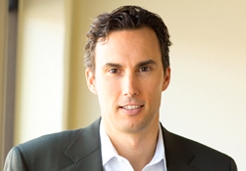With an eye on the bottom line, hospitals and health systems and their marketing firms traditionally haven’t spent much time on school campuses. After all, children are not making healthcare purchasing decisions.
But could schools actually be the cornerstone in helping to shift America’s health consciousness? And by leading this initiative through branded health and wellness on-campus campaigns, could this strategy actually be a win-win for healthcare marketers?
The Battle of the Bulge
In general, organizations interested in promoting healthier habits have been on the losing side in the battle for the hearts and minds of young consumers. A 2012 Federal Trade Commission report showed that while trending downward slightly, processed food manufacturers spent nearly $1.8 billion marketing to youths in recent years. Facing pressure from nutritionists and other health advocates, the food industry adopted the Children’s Food and Beverage Advertising Initiative in 2014. Largely touted by the food industry as a panacea, the program is voluntary and not all companies marketing food to children participate.
Some of the worst offenders in junk-food peddling are brands that make up Americana. McDonald’s leveraged the word “love” as part of their brand position, helping sales growth during the recession. In a similar vein, Coca-Cola promoted “happiness” in association with its signature sugary beverage. Due to this type of messaging, healthcare marketers have an uphill battle to wage.
A Golden Opportunity
There’s a big opportunity for health systems to be the David to the junk food industry’s Goliath. Schools could actually be very fertile ground for marketers. Here’s why.
First, schools are a fairly uncluttered advertising canvas frequented by adults, especially mothers, who are often making healthcare purchasing decisions for their families and extended families. Second, taking a page from the fast-food marketers’ playbook, strong brand impressions are formed at a very young age. Thus, health systems can create healthy bonds with children and lay the groundwork to engage with future brand-loyal patients for generations to come.
Most importantly, the partnership of health systems and schools would be a win-win for the health of the communities they serve. While gaining marketing exposure, health systems can help educate kids on proper nutrition and the consequences of poor diet, much like the famously successful push to lower tobacco usage that gained full steam in the 1980s. This educational benefit could help many kids avoid chronic diseases as they age, resulting in a huge positive impact on our society. With government challenges on tax-exempt status becoming a topic of conversation in health system boardrooms across the country, there is no better time to invest.
“Posting Up” in Schools
Some health systems are taking a step in the right direction. East Tennessee Children’s Hospital in Knoxville, Tenn., has established a childhood obesity coalition as part of its community outreach program. It’s grown to include more than 50 organizations and community agencies with a goal to help transform Knoxville into one of America’s fittest cities.
The coalition offers educational opportunities such as Health Happens, a program that partners with the University of Tennessee Department of Nutrition and Public Health. Sponsored by a grant from Blue Cross Blue Shield of Tennessee, Health Happens teaches preschoolers about the importance of nutrition and physical activity. Another coalition program called Grub Club, sponsored by Keurig Green Mountain and Knox County Parks and Recreation, teaches children about how healthy food is grown and harvested.
Others are taking advantage of grassroots marketing opportunities in schools. MedPost Urgent Care, a wholly owned subsidiary of Tenet Healthcare operating 39 centers in eight states including California and Texas, has added schools to their grassroots marketing mix in certain regions.
“Grassroots marketing in schools allows us to demonstrate our commitment to partnering with the local community,” said Jeffrey Wang, Medpost’s regional director of operations.
The company often sponsors high school sports programs to receive prominent signage at sporting events and has distributed promotional products at some on-campus career days. Although involving doctors to help educate students on health and wellness topics has not been part of their strategy, it’s something they’re considering.
Wang says that at least two-thirds of the schools approached by the company have been eager to participate in sponsorships. “The hold-out schools have nothing against healthcare, they just have blanket policies against accepting any type of sponsorship dollars from outside companies,” he said. “All in all, the events we sponsor have been a great way to reach mothers who are making healthcare purchasing decisions for their families.”
A Healthy Sign
There are some signs that the tide is starting to turn. The Centers for Disease Control and Prevention recently announced that obesity rates for toddlers have dropped from 12% to 8% over the past decade. While encouraging, the fact that we have an obesity rate for toddlers at all is still cause for alarm.
Healthcare marketers should join the movement to help these children, and our country at large, enjoy a better quality of life. There’s an opportunity for marketers to combine community education with ongoing grassroots marketing for a more consistent presence in schools. While doing so, children and their mothers will likely form a life-long bond with the healthcare brands that engage with them. In the process, perhaps kids across America will finally learn that sugary cereals are not really part of a “balanced breakfast” and their school-lunch pizza is not a vegetable.
David Maricich is president of Maricich Healthcare Communications.







